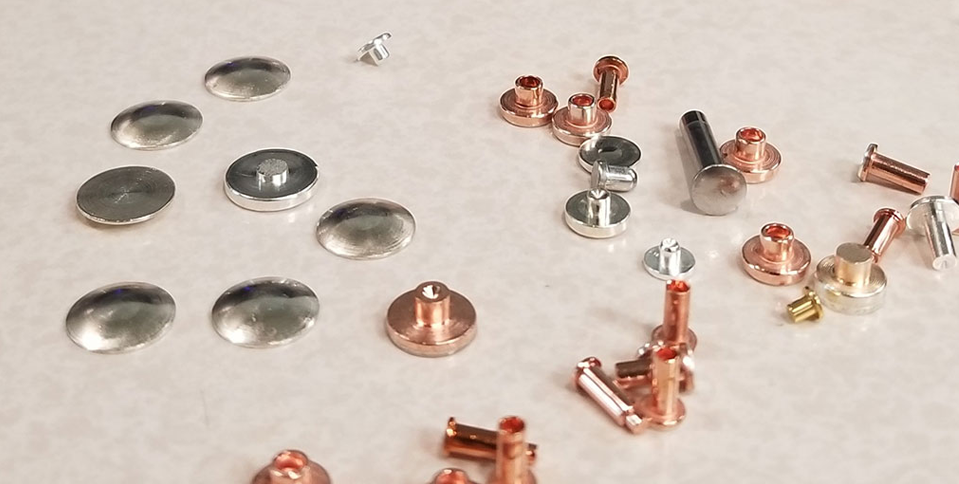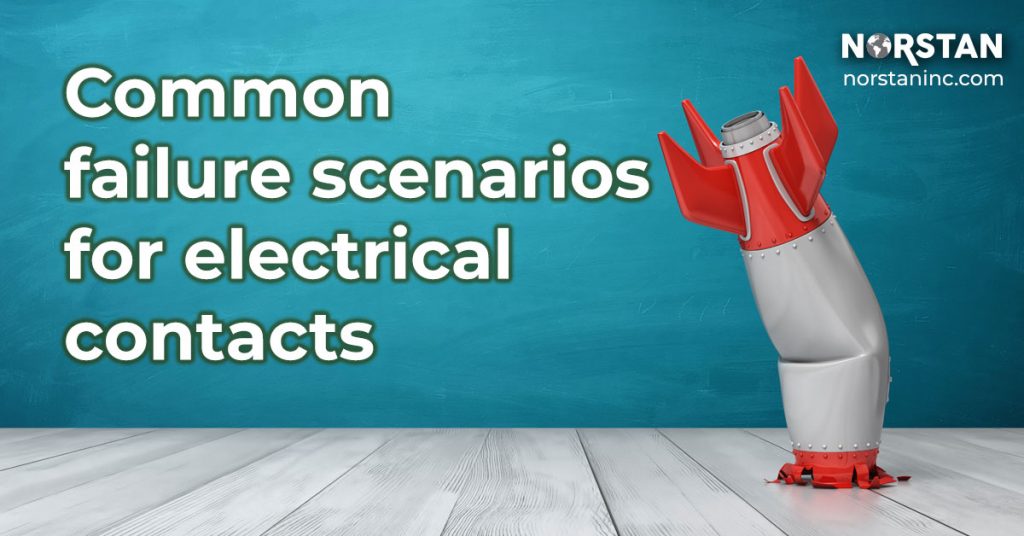-
Call us
262-947-0707
Call us
262-947-0707

Often, when a product or component fails, it’s because it wasn’t adequately designed for the environment or the application in which it was used.
Think of the O-rings on the boosters of the Challenger Space Shuttle, which were never designed to survive a launch in cold weather. Or the Samsung Galaxy Note 7 smartphone, which had a tendency to catch fire because of poor design. Do you remember the infamous Ford Explorer from the last decade, which tended to roll over under certain conditions?
Electrical contacts are no different. If they’re not correctly engineered for the application and the environment in which they’re used, they won’t last long. What causes them to fail prematurely?
What is the current and voltage that will pass through the electrical contact? This must influence the size and material composition of your electrical contacts. Excessive current could cause the contact to weld closed or cause the contact to erode. If material cannot handle the current capacity for the application, erosion or welding will cause failure of the operating device.
Is there an arc generated when the switch opens or closes? If current is arcing across an electrical contact, it tends to clean the surface, helping to ensure excellent continuity. If there is no arcing, the contact is at the mercy of its materials, which may develop a contamination film or corrosion due to the environmental conditions to which the device is exposed.
How many cycles is the switch exposed to? If it must withstand a large number of cycles, the designer should choose a solid contact rivet or machine composite rivet for longevity.
How big is the package into which the switch will be incorporated? A common mistake made by many design engineers is making the package into which it’s being incorporated too small. The smaller the contact, the smaller it’s surface area. That makes it harder for the electrical contact to dissipate heat. Finally, the selection of materials can have a big impact on a device’s ability to dissipate heat. Certain metals cool faster than others.
What environmental conditions will the switch be exposed to? For example, you can’t use a copper contact in an application where the electrical contact will be exposed to air. When the surface of a copper contact oxidizes, it loses its ability to conduct electricity. Plating a copper contact with a metal that is resistant to corrosion can be an excellent, low-cost solution compared to using exotic, higher-cost materials.
Does the contact need to be wiped? Smaller electrical contacts are also prone to have problems operating consistently in temperature extremes, moist or dusty environments. In demanding applications like these, designers must design overtravel into the contact so it can be wiped clean during each cycle.
Norstan has an unparalleled depth of metallurgical and application knowledge that we can use to help you optimize the design of the electrical contacts in your switches. Have a metallurgical question? Ask Hugo